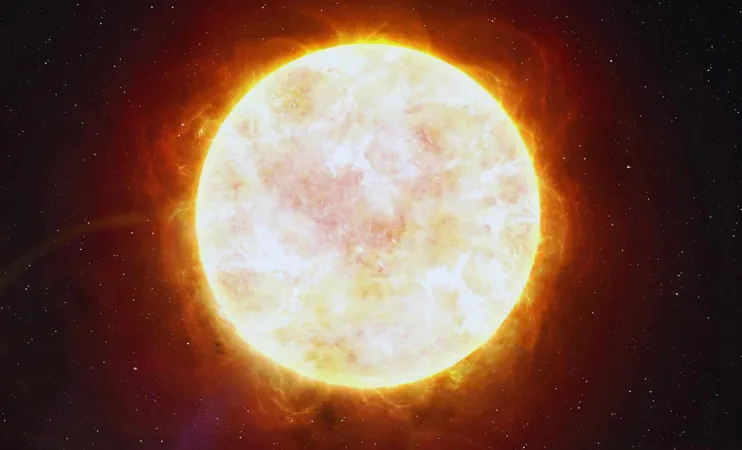
The Sun's Unbelievable Comeback: Is It Awakening?
2025-09-17
Author: William
A Shocking Solar Resurgence
In a startling revelation, NASA researchers have uncovered that the Sun—once thought to be quietly slipping into an unprecedented lull—has been on the rise since 2008. This groundbreaking study, led by Jamie Jasinski from NASA’s Jet Propulsion Laboratory, throws previous assumptions right out the window, sparking fresh intrigue about the complexities of our celestial neighbor.
The Unexpected Turnaround
Just a few years ago, solar experts were nearly unanimous in their predictions: the Sun was gearing up for a lengthy period of low activity. Indicators like sunspot numbers and solar winds had shown a consistent decline since the 1980s, reaching their lowest point in 2008. Many scientists anticipated a new 'Maunder Minimum,' reminiscent of the extended quiet phases of the 1600s and early 1800s. But then, a plot twist—the Sun defied expectations and began to awaken!
Jasinski and his team were quick to observe this stunning reversal. "All signs pointed to a prolonged phase of low activity," he said, astonished. "It was a surprise to see that trend reversed. The Sun is slowly waking up."
The Stakes for Earth: Space Weather Risks
This upsurge in solar activity isn't just a thrill for scientists; it could have real-world implications right here on Earth. Increased solar flares and coronal mass ejections could jeopardize GPS systems, communications, satellites, and even power grids. NASA is acutely aware of the situation, especially with the Artemis program gearing up for lunar missions and plans for Mars. A more active Sun means heightened radiation levels, thus increasing risks for astronauts. Understanding the Sun's behavior is now a matter of safety as much as it is about science.
Missions That Will Change Our Understanding
To tackle these challenges, NASA and NOAA are launching a new fleet of missions starting September 23. This includes the IMAP, the Carruthers Geocorona Observatory, and SWFO-L1, all designed to collect critical data that will enhance space weather forecasts and help scientists stay ahead of potential solar disruptions.
Unlocking Long-Term Solar Mysteries
While solar activity typically follows an 11-year cycle—predictable in the short term—long-range trends that last decades or centuries remain enigmatic. The Maunder Minimum (1645-1715) and a similar period between 1790 and 1830 left researchers baffled. As Jasinski highlights, "We don’t fully grasp the reasons behind these lengthy quiet phases, especially the 40-year minimum that started in 1790." This is why the year 2008 was pivotal. Scientists initially feared we were heading into another prolonged quiet spell, but instead, the Sun decided to shake things up.
By analyzing data from NASA's OMNIWeb Plus platform, which compiles readings from spacecraft like ACE and Wind, researchers found all metrics—including solar wind speed and plasma temperature—have been increasing. It appears that far from fading, the Sun is ramping up its activity, challenging our existing theories and understanding.









 Brasil (PT)
Brasil (PT)
 Canada (EN)
Canada (EN)
 Chile (ES)
Chile (ES)
 Česko (CS)
Česko (CS)
 대한민국 (KO)
대한민국 (KO)
 España (ES)
España (ES)
 France (FR)
France (FR)
 Hong Kong (EN)
Hong Kong (EN)
 Italia (IT)
Italia (IT)
 日本 (JA)
日本 (JA)
 Magyarország (HU)
Magyarország (HU)
 Norge (NO)
Norge (NO)
 Polska (PL)
Polska (PL)
 Schweiz (DE)
Schweiz (DE)
 Singapore (EN)
Singapore (EN)
 Sverige (SV)
Sverige (SV)
 Suomi (FI)
Suomi (FI)
 Türkiye (TR)
Türkiye (TR)
 الإمارات العربية المتحدة (AR)
الإمارات العربية المتحدة (AR)